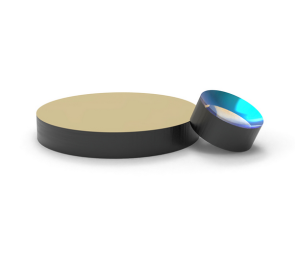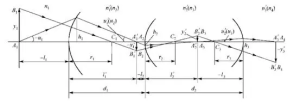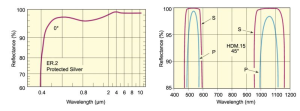So far, we have discussed the direct measurement of the optical properties of the filter, but there are still some natural properties of objects that are difficult to measure, which are related to the quality and processing of the film and substrate. For any optical element, the substrate will be described in detail, such as surface shape, polishing degree, allowable coating, finish, etc. The substrate should not be considered here. Mil-e13830a has been widely used in the United States, providing a set of effective standards for optical elements including substrates.
The quality of the coating can be measured by the presence of defects such as pinholes, stains, sputtering marks and uncoated areas. There are two main reasons for pinholes.
First of all, they actually have very small uncoated areas or some uncoated areas, which will lead to additional optical transmission cut-off areas, thus reducing the overall performance of the filter.
Secondly, for filters in visible light band, these shortcomings will affect the overall appearance. In fact, they make the appearance worse than the actual performance. In addition to simple appearance judgment, the allowable size of pinholes can also be determined according to the larger value of the given size unit area, that is, the number of pinholes when the cut-off value of the filter decreases to the given value. In order to calculate this value, the smaller area of the filter used at any time must be assumed. Obviously, the smaller the area, the smaller the number of pinholes. Of course, in any filter, the actual calculation of pinhole needs a lot of manpower. In practical applications, the measurement of visible filters is often visual when comparing filters with reference samples.
A simple lamp box fixing bracket can be easily constructed, and a large number of filters can be placed on it, which can be compared with the reference sample to determine whether it meets the requirements. For filters on opaque substrates, it is easier to measure their actual cut-off performance.
Generally speaking, unless the quantity is large, the impact on optical performance is small. An important risk is that material fragments may fall down and pinholes may appear. The sputtering process sometimes causes nodule growth and brings some problems, or if there are a large number of sputtering fragments, the scattering loss may increase. Like the control pinhole, this can be controlled, but because the optical performance of specular reflection is hardly affected, unless the number of sputtering marks is large, the way to determine the allowable value is often subjective. If pinholes are produced by sputtering, they will be treated separately.
It is generally stated in the index that there is no visible sputtering track, but this description is very vague, especially when the inspector has no optical experience. When the user inspector uses the lens to assist the naked eye observation, there will be differences between the user and the manufacturer. When it can use the same precise method as the test pin hole, connect the test with the reference sample agreed by both parties.



